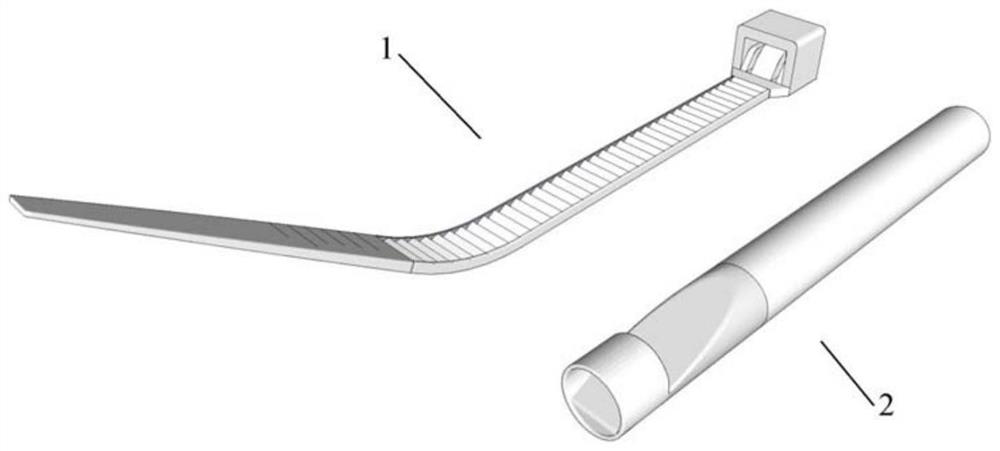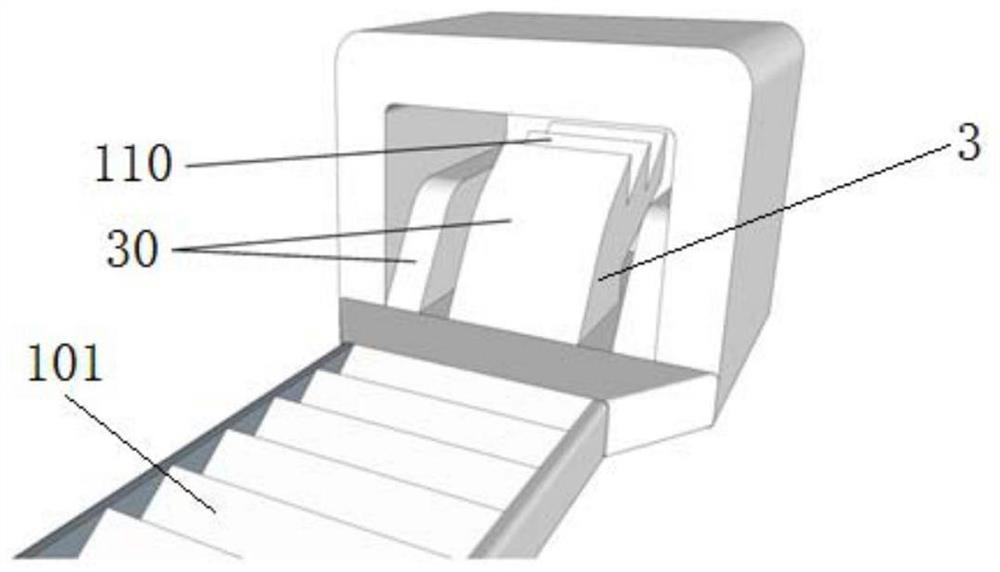Tissue ligation device for laparoscopic surgery
A technique for surgery and ligation device, applied in the field of medical devices, can solve the problems of limited operating space, not easy to tighten, fall off, etc.
- Summary
- Abstract
- Description
- Claims
- Application Information
AI Technical Summary
Problems solved by technology
Method used
Image
Examples
Embodiment 1
[0034] like Figure 1-7 As shown, the tissue ligator for laparoscopic surgery in this embodiment includes two components, namely, a ligation strip 1 and a retracting rod 2 .
[0035] like figure 2 and 3 As shown, the tie bar 1 of this embodiment includes a rack 10, the upper surface of the rack 10 has a first anti-slip tooth array 100, and the first anti-slip tooth array 100 includes a number of th An anti-skid tooth 101 meets the size requirements of various lesion tissues. The right end of the rack 10 is connected with a tooth cavity 11. The tooth cavity 11 is a cavity structure with open ends, including a plug-in end (that is, the left end of the tooth cavity) and an extension end (that is, the right end of the tooth cavity); the tooth cavity 11 has a At least one second anti-skid tooth 110 that engages with the first anti-skid tooth 101 to limit the position. The left end of the rack 10 is used for inserting into the tooth cavity 11 from the insertion end (ie the left...
Embodiment 2
[0044] The difference between the tissue ligator for laparoscopic surgery in this embodiment and the first embodiment is:
[0045] At least one of the design of the slope structure of the insertion end of the tooth cavity and the design of the guide slope of the retracting rod in the first embodiment is omitted, and the structure of the ligation device is simplified to meet the needs of different applications.
[0046] For other structures, refer to Embodiment 1.
Embodiment 3
[0048] The difference between the tissue ligator for laparoscopic surgery in this embodiment and the first embodiment is:
[0049] The tissue ligator for laparoscopic surgery in this embodiment can also be used for laparotomy. The structure of the retracting rod is not limited to a round rod structure, and its cross-section can also be triangular, quadrilateral, elliptical and other structures to meet the needs of different users.
[0050] For other structures, refer to Embodiment 1.
PUM
 Login to View More
Login to View More Abstract
Description
Claims
Application Information
 Login to View More
Login to View More - R&D
- Intellectual Property
- Life Sciences
- Materials
- Tech Scout
- Unparalleled Data Quality
- Higher Quality Content
- 60% Fewer Hallucinations
Browse by: Latest US Patents, China's latest patents, Technical Efficacy Thesaurus, Application Domain, Technology Topic, Popular Technical Reports.
© 2025 PatSnap. All rights reserved.Legal|Privacy policy|Modern Slavery Act Transparency Statement|Sitemap|About US| Contact US: help@patsnap.com



